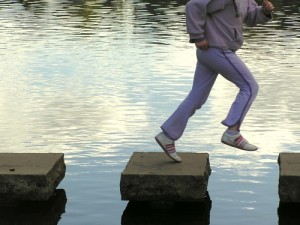 This is the second installment in a three part series of the bankruptcy process in Arizona. In the first article I discussed what to expect prior to your bankruptcy case being filed. In this article I will go over what you can expect after your case is filed up through the day when the bankruptcy court grants you a discharge of your debts.
This is the second installment in a three part series of the bankruptcy process in Arizona. In the first article I discussed what to expect prior to your bankruptcy case being filed. In this article I will go over what you can expect after your case is filed up through the day when the bankruptcy court grants you a discharge of your debts.
The Day After Your Your Bankruptcy is Filed
Immediately upon filing your bankruptcy case the bankruptcy court issues an order called the Automatic Stay that stops all collection efforts against you. The Automatic Stay is one of the most powerful tools in bankruptcy law.
Whether you are being sued, your house foreclosed, your wages garnished, or are dealing with never ending collection calls, the Automatic Stay mandates that all collection efforts stop immediately. The bankruptcy court will mail out notice to your creditors within about 2-3 business days.
Your Bankruptcy Trustee
Every Chapter 7 and Chapter 13 bankruptcy case is assigned a trustee. The trustee assigned to your case works under the Department of Justice and their job is to evaluate your case, review your documents, and collect any non-exempt assets that can be distributed to your creditors.
A week or two after your case is filed you will receive a letter from your bankruptcy trustee informing you of the date for the Meeting of Creditors (more about that below), and requesting some bank statements, pay stubs, and tax returns. It is vital that you respond to your trustee’s request for documents in a timely manner. If you don’t, your bankruptcy case can be delayed.
If you have assets that you own free and clear that are not protected under Arizona’s exemption laws, in a Chapter 7 bankruptcy your trustee can seize those assets, sell them, and distribute the proceeds to your creditors. There are ways we can work with the bankruptcy trustee so that you avoid losing assets, but that is a topic for another day.
The Meeting of the Creditors
The Meeting of the Creditors, or “341” meeting sounds a lot scarier than it is. While it is the creditor’s meeting, it is usually a meeting between me, you, and your bankruptcy trustee. Rarely do creditors actually appear at the meeting.
This meeting is an opportunity for your bankruptcy trustee to meet with you and ask you questions about your bankruptcy filing while under oath. You will be required to show government issued photo ID – i.e. your driver license, and proof of your social security number. It is preferable that you bring your original social security card, however in Arizona most trustees will accept a W-2 that contains your social security number.
Once the meeting begins you will be asked a few questions by the trustee. Specifically, you will be asked if you reviewed and signed your bankruptcy documents prior to filing, if you have lived in Arizona for at least two years, if you owe or pay child support or spousal maintenance, and if you are a beneficiary under a will or trust. Then, if the bankruptcy trustee has any specific questions about your case he/she will ask them at that time.
The typical Meeting of Creditors lasts about 5 minutes – literally 5 minutes. I know it is easy for me to say, but the Meeting of Creditors, while important, is nothing to lose sleep over.
After the Meeting of Creditors
Once the Meeting of Creditors is over the only thing you have left to do is to complete a Financial Management Course. If you hire my office you will complete this online in a course offered by Dave Ramsey. I have received a lot of positive feedback from clients on this course and if you are familiar with Dave Ramsey already you will likely really enjoy this class. It only takes an hour or two but must be completed within about 30 days after the Meeting of Creditors.
The Discharge Order
About 60 to 90 days after the Meeting of Creditors is held you will receive your Discharge Order from the bankruptcy court if you are in a Chapter 7 bankruptcy case. This order is the official document that says you are no longer legally obligated on your debts. It also signals the end of your bankruptcy case in most instances. Creditors who try and collect on debts that have been discharged are subject to being sanctioned.
Once you get through this second stage of the bankruptcy process you are well on your way to becoming debt free. In most cases the hard part is over and it is time to merely wait for the bankruptcy court to finalize your case. In the next article I will go over what you can expect after the Discharge Order is entered and how you can recover from your bankruptcy case.
If you need to file for bankruptcy I would be happy to go over your situation and provide you with the different options that are available. My bankruptcy consultations are always free. I can be reached at (480) 420-4028 or via email at john@skibalaw.com.
Schedule a Free Consultation!
 John Skiba, Esq.
John Skiba, Esq.
We offer a free consultation to discuss your debt problem and help you put together a game plan to eliminate your debt once and for all. Give us a call at (480) 420-4028
